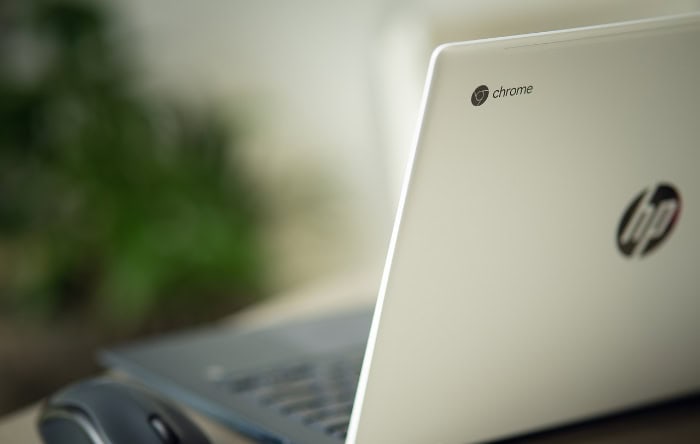Why Is Windows So Expensive? Behind the Price Tag

Few things spark as much debate among tech enthusiasts as the cost of Windows. With a variety of pricing tiers like Home, Pro, and Enterprise, and a significant investment required for many users, it's no surprise that consumers often question why Windows carries such a hefty price tag.
What might appear as a mysterious premium cost is actually the result of several layered factors. From Microsoft's massive development efforts to its dominant market position and unique value propositions, the reasons behind Windows' pricing are both complex and compelling.
Microsoft's Development and Maintenance Costs
The costs associated with developing and maintaining an operating system as complex as Windows are immense. Microsoft invests significant resources to ensure Windows remains a reliable, secure, and cutting-edge platform for its diverse user base.
Behind its polished interface lies an intricate web of research, development, and support efforts designed to meet the demands of both everyday consumers and businesses worldwide.
Research and Development Investment
Creating and refining an operating system on the scale of Windows requires vast resources and a highly skilled workforce. Microsoft employs thousands of engineers, designers, and researchers who work tirelessly to improve the platform.
From developing new features to enhancing existing tools, this effort represents a continuous investment to stay competitive in a rapidly changing industry.
Managing technical debt also demands considerable resources. Windows has been evolving for decades, which means maintaining backward compatibility with older software and hardware comes with unique challenges.
Supporting legacy systems alongside modern innovations requires meticulous planning and technical expertise, adding to the development cost.
Security is another area where Microsoft invests heavily. Constantly updating Windows to address vulnerabilities, combat emerging threats, and protect user data involves cutting-edge research and ongoing vigilance.
These updates, though often unnoticed by users, are crucial in ensuring the operating system remains secure and reliable.
Operating System Lifecycle Management
Unlike many competitors, Windows offers extended support for its operating systems, often exceeding ten years. This lengthy lifecycle means that Microsoft must allocate resources to provide updates, security patches, and customer support for older versions long after their initial release.
Ensuring backward compatibility is another complex task that adds to the cost. Windows must function seamlessly across a wide variety of hardware configurations, from decades-old machines to the latest cutting-edge technology.
Testing the operating system across such a broad spectrum is resource-intensive, requiring rigorous quality assurance processes.
Additionally, Windows supports thousands of software applications, which means compatibility testing with third-party programs is essential. Failing to do so could disrupt users and harm Microsoft's reputation, making this aspect of lifecycle management non-negotiable.
Intellectual Property Considerations
Developing an operating system like Windows involves not just technical innovation but also extensive intellectual property management. Microsoft holds a vast portfolio of patents to protect its innovations, and maintaining this portfolio incurs significant costs.
Legal compliance across global markets is another financial burden that influences pricing. Microsoft must adapt Windows to meet varying regulations and standards in different countries, adding complexity to its development and distribution processes.
The integration of third-party technologies further adds to these costs. Licensing fees for features or tools not developed in-house must be accounted for, ensuring that Windows includes the functionality users expect without infringing on others' intellectual property.
Market Position and Business Strategy

Windows has maintained a dominant presence in the desktop operating system market for decades, and its market position heavily influences its pricing strategy. The balance between catering to individual consumers and creating tailored solutions for enterprises has allowed Microsoft to optimize revenue generation while reinforcing its leadership role.
Understanding the interplay of market dynamics and business strategy highlights why Windows commands the prices it does.
Dominant Market Share Dynamics
Windows holds an overwhelming lead in the desktop operating system space, with more than 70% of market share globally. This level of dominance gives Microsoft significant pricing power, allowing it to set rates that reflect the value the software provides to a diverse set of users.
Its widespread adoption in homes, schools, and businesses ensures demand remains steady.
Enterprises, in particular, rely heavily on Windows to power their systems and maintain operational continuity. Large corporations depend on the ecosystem’s reliability and compatibility, creating an ongoing source of stable revenue for Microsoft.
The company leverages this dependency to maintain consistent pricing that supports long-term profitability.
Historically, Windows has transitioned from a growth-oriented business model to one focused on retaining its value and market position. In its early years, the emphasis was on reaching as many users as possible through aggressive expansion.
Today, Microsoft prioritizes refining its offerings to enhance customer experience and justify its pricing, rather than aggressively undercutting competitors.
Revenue Model Transformation
The way Microsoft monetizes Windows has evolved substantially over time. Traditionally, users would purchase a one-time license, but the company has shifted toward subscription-based models to align with modern consumer trends.
Services like Microsoft 365 integrate seamlessly with Windows, creating recurring revenue streams that incentivize users to stay within the ecosystem.
Windows also serves as a core piece of Microsoft’s broader business strategy, acting as a gateway to other products and services. The operating system supports integration with cloud solutions, enterprise tools, and consumer applications, further embedding itself in everyday workflows.
This interconnected ecosystem strengthens customer retention and amplifies its value proposition.
Corporate profitability remains a priority as Microsoft balances the expectations of shareholders with the costs involved in maintaining Windows. Pricing decisions for the software reflect not only development costs but also the company's need to sustain its reputation as a profitable leader in the technology sector.
Enterprise vs. Consumer Pricing Philosophy
Microsoft adopts distinct approaches when pricing its software for businesses versus individual consumers. Enterprises benefit from customized pricing solutions tailored to their scale and needs, often through volume licensing agreements.
These arrangements allow organizations to purchase multiple licenses at a reduced cost per unit, ensuring affordability while maintaining profitability for Microsoft.
For individual consumers, pricing tends to be more standardized, with options like Windows Home and Windows Pro offering varied feature sets. While the upfront cost of these licenses might seem significant, consumer pricing is subtly influenced by the subsidies provided by enterprise customers.
The revenue generated from businesses offsets some of the financial pressure, allowing Microsoft to offer its products at relatively accessible prices to individual users.
Value Proposition Analysis

The price of Windows often raises questions, but its value becomes clear when compared to what it offers versus alternatives. Beyond being a simple operating system, Windows provides features, compatibility, and integrations that enhance productivity and user experience.
Feature Comparison with Alternatives
Windows stands out for its unique features and proprietary capabilities that are rarely matched by competing operating systems. Its robust multitasking tools, compatibility with extensive software libraries, and seamless integration with a variety of hardware make it a powerful option for personal and professional use.
From casual users to power users, many rely on Windows for its flexibility and extensive utility.
One of its standout strengths is software compatibility, particularly with applications like Microsoft Office, Adobe Creative Suite, and numerous third-party programs. Unlike some alternatives that lack widespread software support, Windows runs the broadest range of applications, ensuring users are not limited by compatibility issues.
The operating system also excels in the gaming arena. Gamers benefit from Windows' superior gaming performance and advanced hardware optimization, which make it a top choice for PC gaming.
Support for technologies like DirectX enhances graphics quality and performance, and its hardware compatibility ensures users can customize their gaming setups without limitations. These advantages elevate Windows above systems that struggle to deliver a comparable gaming experience.
Hidden Cost Considerations
While the upfront price of Windows may seem like a significant expense, its total cost of ownership offers several savings that are not immediately obvious. For individuals and organizations alike, the value it provides over its entire lifecycle often outweighs the initial expense.
Standardized workflows built over decades of widespread use make Windows highly familiar and intuitive for most users. This familiarity reduces the time needed to learn the system, leading to increased productivity and efficiency.
Particularly in professional environments, this time savings represents a substantial advantage, as users can quickly adapt to Windows-based systems without a steep learning curve.
Technical support is another important consideration. Microsoft offers comprehensive support services, providing assistance with troubleshooting, updates, and security issues.
The reliability and availability of this support contribute to a smoother experience for users and minimize downtime, a factor that holds particular value for businesses.
Ecosystem Integration Benefits
Windows thrives as an essential part of the Microsoft ecosystem, seamlessly integrating with tools and services like Microsoft 365. Applications such as Word, Excel, and Teams work effectively across Windows devices, creating a unified workspace for users.
The tight connection between the operating system and these tools enhances productivity by streamlining workflows and ensuring a cohesive experience.
Collaboration with hardware manufacturers is another advantage of Windows. Pre-installed on many devices, the operating system benefits from optimized driver support and hardware compatibility.
This collaboration allows the system to function effortlessly across a vast array of PCs, laptops, and tablets, reducing compatibility issues and ensuring smooth performance.
Additionally, developers benefit from Windows' consistent platform. Programming tools and frameworks like Visual Studio are tailored for Windows, making the operating system an attractive choice for software creation.
The consistency and reliability of the platform drive innovation and ensure that users have access to a steady stream of new applications and solutions.
In combination, these factors highlight why Windows remains a compelling option despite its cost. Its unique features, broad compatibility, and integration with essential tools provide immense value to individuals and enterprises alike.
Cost-Saving Options and Alternatives

For those who find Windows pricing a hurdle, there are numerous cost-saving options and viable alternatives that can align with different budgets and needs. From purchasing strategies to alternative operating systems, users have access to solutions that minimize expenses while still allowing them to meet their computing requirements.
Being mindful of these options can help individuals and organizations alike adopt Windows or explore cost-effective alternatives without sacrificing functionality.
Legitimate Purchase Alternatives
Windows is often available through channels that offer legitimate savings, particularly for those who qualify based on specific conditions. OEM licenses are one such option, typically tied to new hardware purchases.
These licenses are pre-installed on devices from manufacturers, often at a reduced price compared to retail versions. However, OEM licenses come with limitations, such as being non-transferable to other systems, making them less flexible for users who frequently upgrade their hardware.
Another avenue for cost savings comes through educational and non-profit discount programs. Many universities and non-profit organizations collaborate with Microsoft to offer Windows licenses at significantly reduced prices—or even free of charge—to their members.
Students, teachers, and non-profit employees can take advantage of these programs to access professional-grade software at a fraction of the cost.
Purchasing new hardware that includes Windows as part of the package is another effective way to save money. Many laptops and desktop PCs come with Windows pre-installed, offering users a ready-to-use operating system without the need for a separate purchase.
In these cases, the cost of the license is often absorbed into the price of the device, presenting a more affordable bundled option.
Free and Low-Cost Operating System Options
For those seeking completely free or low-cost alternatives to Windows, Linux distributions and Chrome OS present attractive choices. Linux offers a range of distributions tailored to various user preferences, from highly technical builds for advanced users to beginner-friendly versions like Ubuntu or Linux Mint.
As an open-source operating system, Linux eliminates licensing costs altogether. However, the open-source nature of Linux also means compatibility with some proprietary software can be limited.
Users may need to rely on alternatives to Windows-exclusive programs, which could require additional learning or adjustments to workflow.
Chrome OS represents another cost-effective option for specific use cases, particularly for users with limited computing needs. With its lightweight design and focus on cloud-based applications, Chrome OS works particularly well for web browsing, media consumption, and basic productivity tasks.
That said, its functionality is more restricted compared to Windows, making it less suitable for users who require specialized software or extensive offline capabilities.
Comparing these alternatives to Windows highlights differences in functionality, performance, and ease of use. While options like Linux and Chrome OS can be inexpensive, they often come with learning curves or reduced compatibility with popular software, making them less universal solutions.
Windows continues to hold an advantage for users who prioritize versatility and familiarity.
Upgrade Strategies
For users already within the Windows ecosystem, choosing the right upgrade path can also help reduce costs while maximizing value. Upgrading from Windows Home to Pro, for instance, is often a preferred option for professionals or businesses requiring advanced networking and security features.
This incremental upgrade allows users to pay only for the features they need without investing in a completely new license.
Selecting the appropriate license type is another important consideration for long-term savings. While retail licenses are transferable between devices, OEM licenses are tied to the hardware they were purchased with.
Users planning frequent hardware upgrades might benefit from retail options, even though they require a higher initial investment.
Timing purchases strategically can further reduce costs. Microsoft often rolls out discounts or promotional pricing around product launches or during major retail events.
Waiting for such opportunities can provide significant savings, especially for those planning to adopt Windows just before or after a new version is released.
Conclusion
The pricing of Windows is shaped by a complex interplay of factors, ranging from development and maintenance costs to market dynamics and its unparalleled value proposition. Microsoft’s ongoing investment in research, security, and system support ensures that Windows remains a dependable and versatile operating system across countless hardware configurations.
Its dominant position in the market also allows for strategic pricing that balances enterprise needs with consumer accessibility.
When evaluating whether Windows is worth its price, it is essential to consider the value it delivers. From software compatibility and gaming performance to seamless integration with the broader Microsoft ecosystem, Windows offers features that are difficult to match.
For those with specific needs or tighter budgets, there are cost-saving measures like OEM licenses, discounts for students and non-profits, or bundled purchases with hardware. Alternatives like Linux or Chrome OS may also cater to certain users, though they often come with limitations in usability or compatibility.
Ultimately, determining the value of Windows depends on individual priorities. For users who require reliability, versatility, and a robust ecosystem, the operating system justifies its cost.
At the same time, Microsoft’s variety of licensing options and the availability of alternatives ensure there is flexibility to meet different budgets and preferences.


